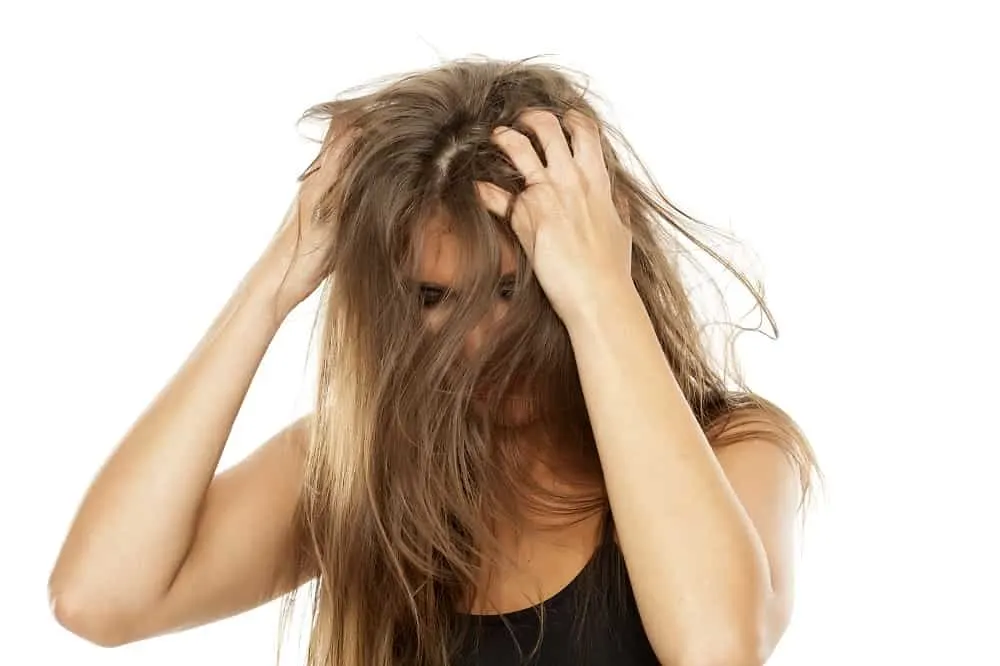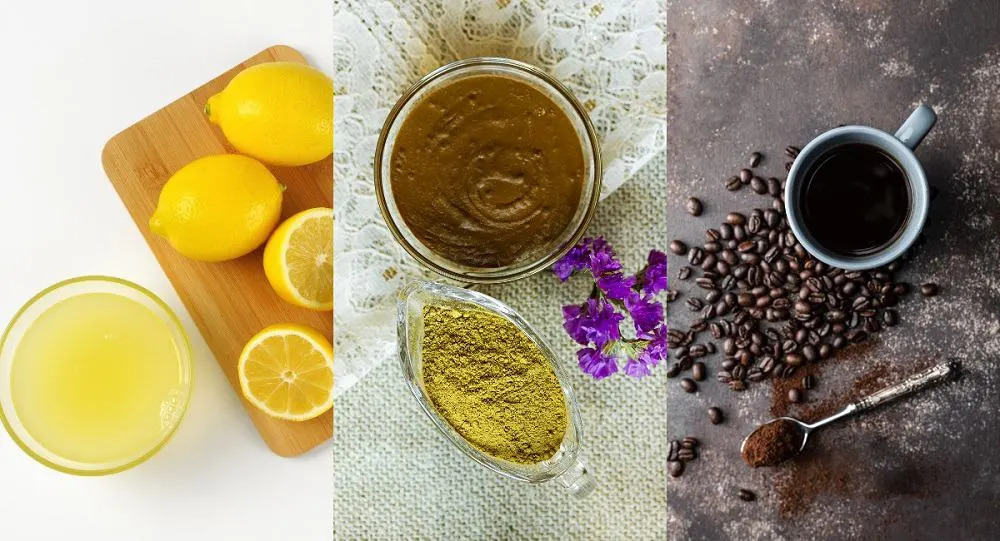Hair dye allergies are more common than you think. Unfortunately, many women experience this problem when going to hair salons or trying box colors at home.
Hair dye allergies are caused by chemicals found in products used to color your hair. The side effects can be severe, and it’s important to use quality products. Before applying, test the products on a tiny patch of skin.
So, because we want to have a great experience whether you dye your hair at home or in a salon, here’s all you need to know about hair dye, allergies and find out which are the alternatives.
What Causes Hair Dye Allergy?

Hair dye allergies most commonly appear when you expose your skin to paraphenylenediamine. This ingredient, also called PDD, is a chemical found in a regular box dye, and it comes in its own bottle. When you mix the oxidizer with PPD, there are more chances of getting an unwanted allergic reaction.
Para-toluenediamine (PTD) is another ingredient that might cause a problem for women with sensitive skin. However, it is better tolerated by your body compared to its “friend,” PPD.
Even if it is recommended to do a patch test on your skin before using the hair dye, that doesn’t mean you will never have an allergic reaction. Using the same product several times can make your skin more sensitive.
This way, you can end up with unwanted irritations or rashes. These chemicals remain in your body for a long time. So, if you frequently dye your hair, chances of facing problems increase.
Also, another thing that you must keep in mind when dyeing your hair is that certain colors are prone to cause an allergic reaction. Black and dark brown hair dye colors usually contain more PPD. In this case, you might want to switch to another hue or an organic product if you still want to dye your hair constantly.
Symptoms

As a woman with sensitive skin, you need to pay attention to the way your skin reacts to hair dye. PPD can cause an unpleasant contact dermatitis reaction, and you won’t be able to spot the symptoms immediately. Sometimes it takes even up to 48 hours to get an allergic reaction like a rash, stinging, or redness.
To make sure you know when you’re having problems caused by hair dye, here are the symptoms you need to pay attention to:
- If you feel a stinging sensation in your face, neck, and even chest, it is clear that your skin doesn’t like the product you are using.
- Itching and even swelling of multiple areas can be a sign of hair dye allergies. If your eyelids, face, or ears are swollen, you are definitely dealing with an allergy to one of the hair dye ingredients.
- Hair dyes can cause rashes anywhere on the body. Make sure you pay attention to all irritations that might appear in the next 48 hours.
Is Hair Dye Allergy Common?
Unfortunately, hair dye allergies are very common. Because they are very mild in some cases, women don’t report them or see a dermatologist.
More than this, recent studies show that these types of hair dye allergies are even more frequent when we’re talking about people over 50 years old.
Can Hair Dye Allergy Cause Hair Loss?
Many signs can show you that you’re dealing with a hair dye allergy. In most extreme cases, yes, studies showed that an aggressive allergy could cause hair loss.
Unfortunately, because people don’t report these problems. They don’t see a doctor and most of them think that hair loss is caused by another factor and don’t blame the hair dye when hair begins to fall.
Hair Dye Alternatives and Recommendations

Depending on your previous allergic reactions, you will need to tell your hairdresser about your sensitive skin. Ask for an organic hair dye or a product that doesn’t contain PPD.
Also, several brands and products brag about formulas without any toxic chemicals. The best way to find out what a hair dye contains is to check the label and know your ingredients. If you are prone to unwanted allergic reactions or have sensitive skin, you might want to avoid PPD, ammonia, PDT, sulfates, and parabens.
Several hair dye brands also exclude petroleum, mineral oils, and other harmful ingredients. The products are not tested on animals, so they are cruelty-free.
You will also be able to find multiple brands that aim to replace as many synthetic ingredients as they can. They use plant-based alternatives to create the herbal hair dye, so this might be one of your best options if searching for an organic product.
Yet, all these organic products contain some chemicals, otherwise, the hair dye won’t last. Just make sure you avoid the ones that trigger your skin problems.
On the other hand, many plants have dyeing properties. By using them, you can create your own hair dye alternative color at home. Among the plant-based hair dye alternatives, you will find:
Lemon juice – if used regularly, your hair will lose its pigment. This way, your hair will get a lighter nuance. On the other hand, once you achieved that, this effect doesn’t fade. Unfortunately, you’ll only get rid of it by getting a new, shorter haircut.
Henna dye – is among the best options out there when you want hair color alternatives that don’t cause allergic reactions. It is plant-based, used to make skin tattoos, and probably one of the most long-lasting hair dye options. So if you are looking for a natural hair dye that lasts about six weeks, henna is the best choice for you.
Coffee – it’s not only one of the best ways to wake up in the morning, but it has many usages. Some use it as a natural scrub, while other women adore naturally darkening their hair. Yes, coffee can be used as a hair dye, and it does such a fine job!
You’ll have to apply it and leave it for at least one hour. Your color can go even two shades darker. Also, some women use it to cover their gray hairs, so if you have a jar of coffee, you can say goodbye to toxic hair dyes.
Relevant Topics for You:
Final Thought
Using hair dye allergy alternatives that contain natural ingredients is one of the best ways to avoid getting irritation, swollen face, rashes, and even hair loss. These products are healthy to use, create a long-lasting shine, and, most importantly, do not harm your hair or skin.
Most of these colors come in shades like henna, senna, and indigo, and some even cause zero damage. Make sure you thoroughly check the label before buying.
Also, if you struggled with allergic reactions, which was your approach? Did you switch to an organic brand or dyed your hair with a natural ingredient? Tell us all about your experience in the comments area!
